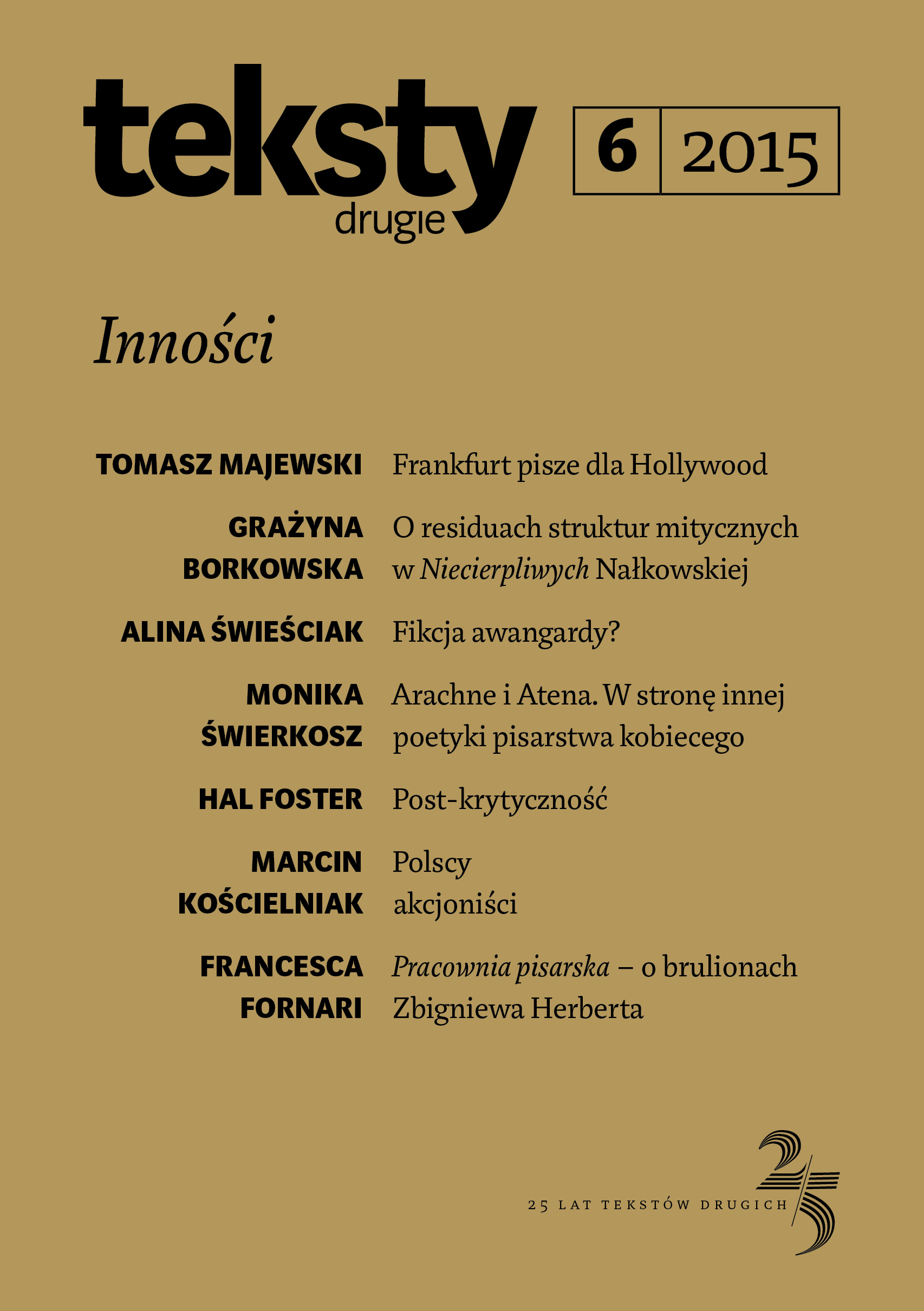Od duhy (nad końskim łbem) do ducha twórczości. O jednym motywie w prozie Józefa Mackiewicza
‘Duha’: One Motif in Józef Mackiewicz’s Prose
Author(s): Adam FitasSubject(s): History, Language and Literature Studies, Geography, Regional studies, Human Geography, Studies of Literature, Recent History (1900 till today), Special Historiographies:, Polish Literature, History of Communism
Published by: Instytut Badań Literackich Polskiej Akademii Nauk
Keywords: Józef Mackiewicz; duha; Grand Duchy of Lithuania; communism
Summary/Abstract: This article offers a structural description and interpretation of one motif in Józef Mackiewicz’s publicistic and creative prose. Duha in Polish refers to an arched beam in horse carriages in Podlachia, a historical region in the eastern part of Poland. This object carries many meanings that point to key themes in Mackiewicz’s work. First, the etymology of duha signals the writer’s rootedness in a community and language with strong east-Slavic influences. Second, duha functions as a metonymy for the Grand Duchy of Lithuania, signalling the writer’s territorial identity and pointing to his central beliefs, such as the ‘national idea’ and the patriotism of the landscape. Third, it can also be seen as a figure of his ecological position, introducing important semantic fields such as the road and movement. Fourth, it contributes to creating an important metaphor in Mackiewicz’s work, namely that of a confrontation between the eastern borderlands of the Polish Republic and communism.
Journal: Teksty Drugie
- Issue Year: 2015
- Issue No: 6
- Page Range: 285-306
- Page Count: 22
- Language: Polish
- Content File-PDF

